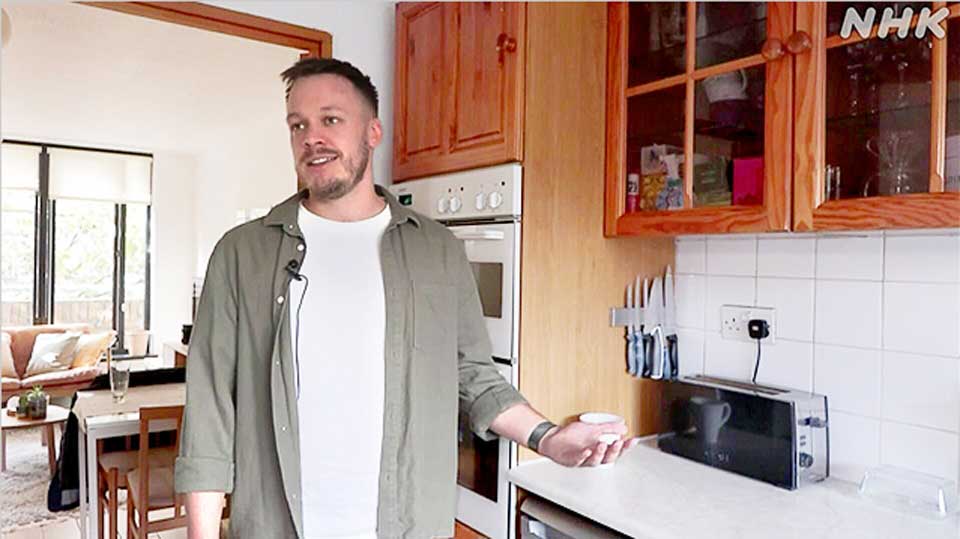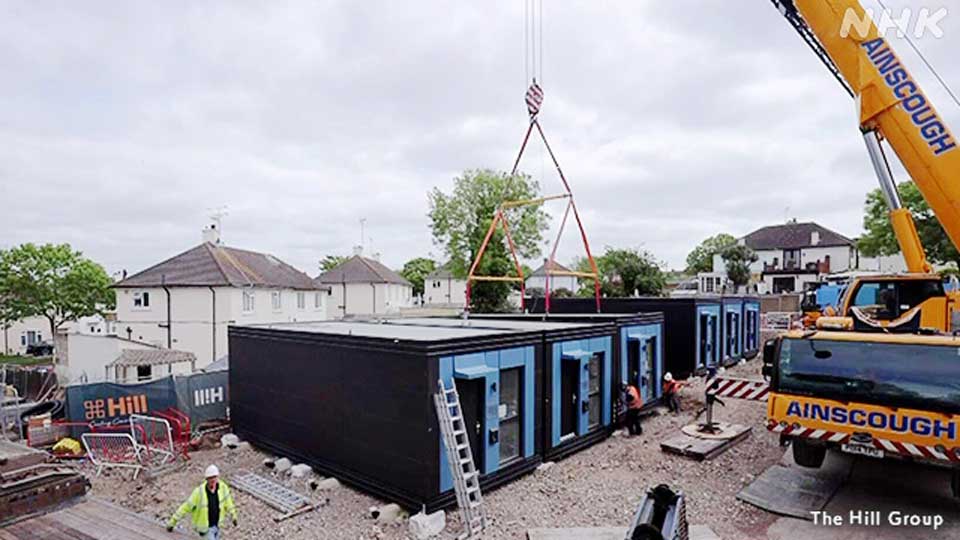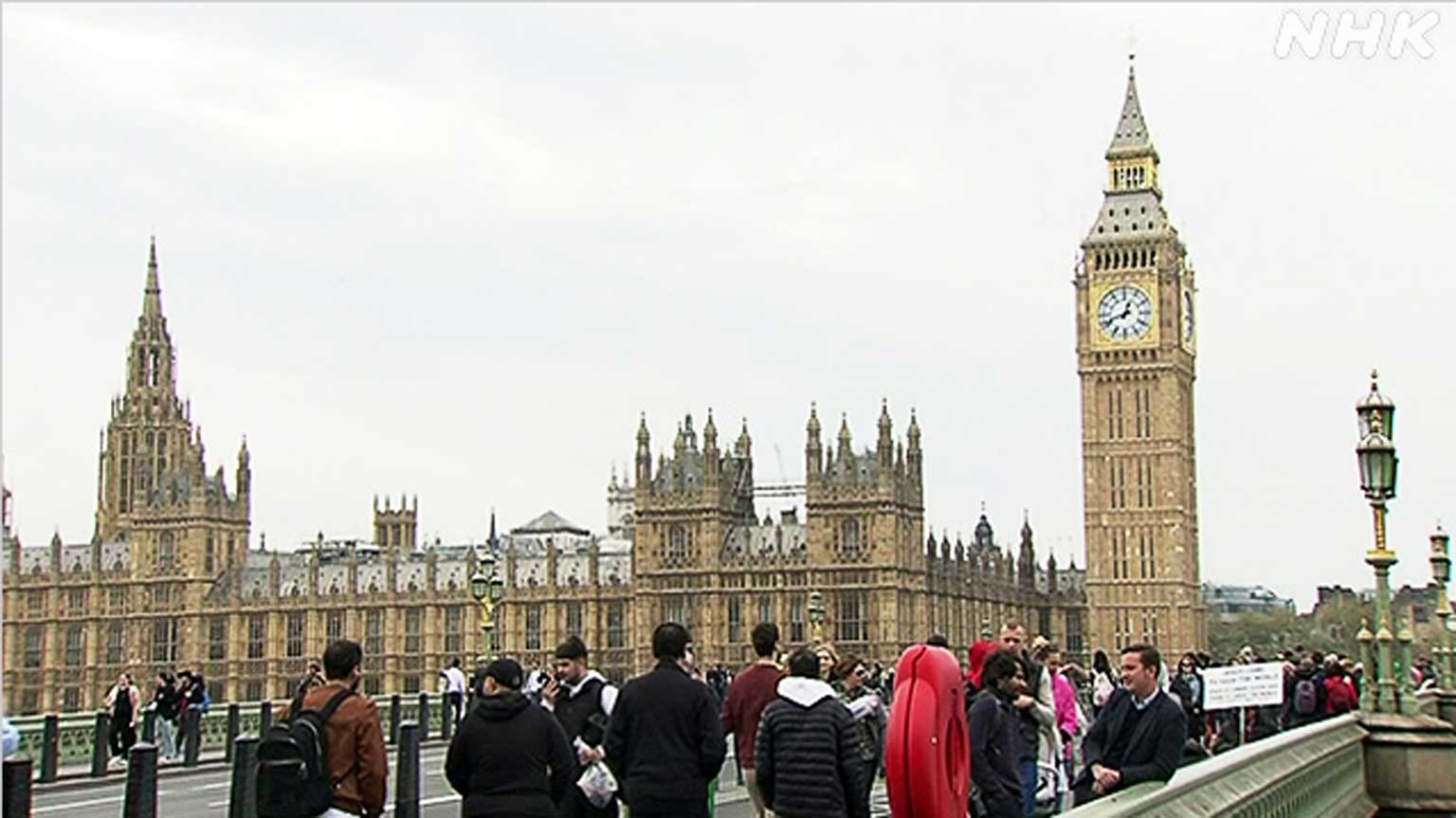Splitting the cost
In central London, healthcare worker Joseph Spannari, 31, tells NHK about the struggle to find somewhere affordable to live alone.

Searching for single accommodation, the cheapest Spannari could find started at about £1,500 ($1,900). "It was probably the size of my bedroom," he sighs. For now, he feels he has no choice but to stay put in a shared house.
Currently, Spannari rents a room in a 4-person house ― originally a two-bedroom property retrofitted to add two more ― for £750 ($950) a month. The overall house rent is £3,000 ($3,800) per month and the landlord has indicated a rise is on the cards. To prepare for that, Spannari has taken on extra shifts at the hospital where he works.
A vacant bedroom in the house recently attracted more than 220 applicants. Spannari explains that many people want to live in central London to pursue careers, and house shares are a popular accommodation choice.
His experience reflects some of the root causes of the current housing crisis.
Demand but no supply
When the pandemic hit, London saw a mass exodus as people left to lockdown outside the capital. Post-pandemic, as workers, graduates, and foreign students return, demand for rentals has soared.
But with the increasing cost of living, rising inflation, and interest rates, many landlords are letting go of their rental properties to deal with costs. The resulting impact on supply means that as of October 2023, the number of properties for rent in London decreased by 35 percent from pre-pandemic times, and the number of inquiries per property tripled Rightmove figures show.
As rents soar, so does homelessness.
Changing face of London's homeless
"The greatest pressure at the moment is housing affordability," says Elizabeth McCulloch, Policy and Research Manager at UK homelessness charity St. Mungo's. She notes that people are seeking help simply because they can't afford their tenancy.
The demographic of the homeless is changing to include a significant number of people who still hold down jobs.
Homelessness does not always mean sleeping out in the open. For some, especially families, it means sleeping in local council-provided temporary accommodation. In 2023, UK government data showed a peak of 104,510 households were living this way; more than half of them with children.
As rents increase, many are unable to secure enough financial security to re-enter the private tenancy market. The knock-on effect is a bottleneck in council-provided temporary housing, meaning more people are falling out of the private rental sector into rough sleeping and unemployment.
'Not a chance if you're unemployed'
Kiran O'Brian, in his 50s, is currently a barista at Change Please, a social enterprise that supports the homeless by selling coffee instead of asking for donations. He has learned the hard way about market challenges.

"If you're unemployed, people just won't even ask you to come to view the property," he says. "As soon as I tell them that I'm not working, I'm homeless, [that] is enough for me not to get it."
O'Brian recounts his re-entry into the private rental sector. He says only 5 out of 100 listings would accept a viewing from someone in his circumstances. Without the help of Change Please, which pays O'Brian the London living wage each year (£5320 ($6,760) more than the national minimum wage), he believes he would still be homeless.
Filling the gaps
Many people like O'Brian rely on charities and other groups for support with employment and housing. According to Change Please CEO Cemal Ezel, 44 percent of homeless people want to work and can work.

"So, each person that we support, we provide them with a training program, a living wage job, [and] a bank account," he says. The scheme is so successful that 76 percent of the homeless people Ezel works with find permanent employment.
The bottleneck for temporary housing is also being eased with the help of private enterprise. One company, The Hill Group, has a novel solution: working with local UK councils to find underused pieces of land and installing unique housing units called SoloHaus.

The SoloHaus is a single-person self-contained modular house specifically designed for people who have experienced homelessness. It has a weekly energy cost of just £5 ($6). All tenants move in with a roadmap created with the help of local charities and an end goal to re-enter the private rental market. The low running costs are designed to offer financial relief, and help tenants save.
So far, The Hill Group has gifted over 200 SoloHaus to UK councils to help people get roofs over their heads.
The way forward
In 2024, the UK government is providing increased housing benefits for low-income renters to help keep them in private tenancies. The attempt to alleviate the burden of rental costs comes alongside the work of charities and support groups that offer temporary accommodation and re-employment opportunities for those made homeless by the rent crisis.
In the meantime, support agency Shelter estimated that 309,000 people in England alone will have experienced homelessness during the 2023 Christmas period.

